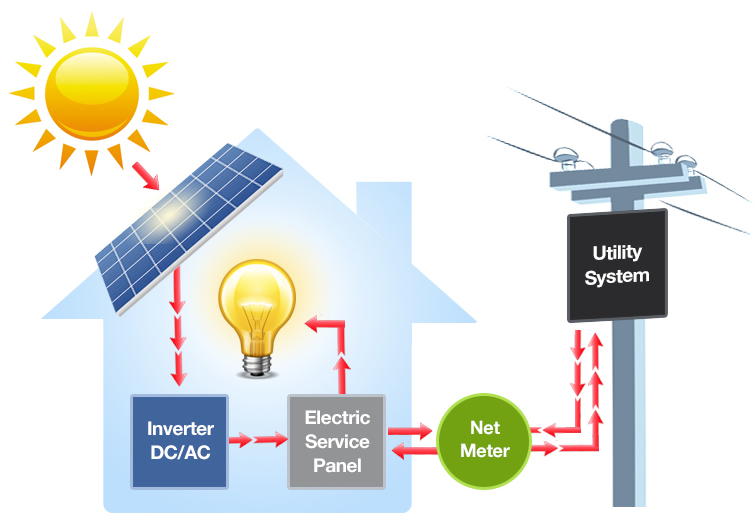Today’s urban areas are experiencing growth at an exponential rate. By 2030 the global population of major cities is expected to grow from 3.2 billion to nearly 5 billion a factor of more than 60 percent in less than 15 years. The natural results of hyper-densification (crowded cities, increased waste, dense energy consumption) can adversely affect air quality. Around 3 million deaths worldwide were linked to outdoor air pollution in 2016, according to the World Health Organization (WHO).
Under the Clean Air Act, by law, in order to improve air quality, states must draft a plan known as a state implementation plan (SIP) to improve the air quality in nonattainment areas (an EPA designated area that is below the national air quality standard). The plan must outline the measures that the state will take in order to improve air quality.
The implementation of highly efficient air quality management solutions must be taken in order to ensure a sustainable, high quality of life for urban citizens. Unfortunately, the lack of accurate, real-time air quality data leaves city officials with inadequate resources to tackle these pressing problems.
Our Solution
Bosch has created the MicroClimate Monitoring System (MCMS), a real-time, low cost, and highly localized air quality monitoring solution that helps manage air quality around the world in ways that have never been possible before.
MCMS’ can send real-time alerts and notifications to computers, tablets, and smartphones on ambient air quality and make recommendations based on multiple parameters, including air pollution, temperature, humidity, and noise levels.
Major advances in sensor technologies, fueled by Intel IoT-based solutions, have brought game-changing improvements to pollution monitoring, including:
• Reliable, real-time data accuracy
• Time- and location-based trend analysis
• Easy-to-use data gathering tools
• In-depth back-end analytics
• Low-cost implementation.


Smarter Activity Scheduling
Traffic lights can be optimized to work with current systems such as camera-based timing such as during heavy commuting and pollution times in order to improve roadway congestion.
Real estate developers and employers can map ideal times for outdoor construction with forecasted microclimate conditions within building complexes or around entire neighborhoods.
Smarter Worker Safety
Our MCMS’ can help businesses meet regulatory, environmental, and worker safety requirements for dust emissions control and can continuously monitor highly toxic gases such as NOx, CO, and SO2 on work and production sites.
The dynamic, field-replaceable sensors are built for weatherproof, outdoor use. Our MCMS can be seamlessly integrated with a real-time safety and tracking systems to meet compliance monitoring requirements.
How Do We Stack Up vs The Competition?
With a combination of on-premise edge sensors and Intel IoT Platform technologies, the air quality monitor offers up huge improvements in cost, weight, size, and power consumption compared to other traditional monitoring stations.
The IoT-based air quality monitor also aids in unorganized data gathering and management, enabling powerful, real-time analytics to help government officials interpret changes in air quality and make immediate decisions.
Built-in data transfer protocols deliver more secure, trusted data from all devices—providing protection against possible attacks and man-made errors.

What is the AQI?
The Air Quality Index, or AQI, is the system used to warn the public when air pollution levels are dangerous. It measures pollutants that can cause diseases, including lung cancer, and other harmful effects. Every day the Air Quality Index (AQI) states how clean or polluted the air is, along with associated health effects that may be of concern. The AQI translates air quality data into numbers and colors that help people understand when to take action to protect their health. The Clean Air Act requires EPA to set National Ambient Air Quality Standards (NAAQS) for six common air pollutants (also known as “criteria air pollutants”). These pollutants are found all over the U.S. They can harm your health and the environment, and cause property damage.
NAAQS are currently set for carbon monoxide, lead, ground-level ozone, nitrogen dioxide, particulate matter, and sulfur dioxide.
Common Air Pollutants
Ozone (smog):
The most widespread and one of the most dangerous pollutants. Ozone is a gas composed of three atoms of oxygen (O3). Ozone occurs both in the Earth’s upper atmosphere and at ground level. Ozone can be good or bad, depending on where it is found.
Good Ozone
Called stratospheric ozone, good ozone occurs naturally in the upper atmosphere, where it forms a protective layer that shields us from the sun’s harmful ultraviolet rays. This beneficial ozone has been partially destroyed by manmade chemicals, causing what is sometimes called a “hole in the ozone”.
Bad Ozone
Tropospheric, or ground-level ozone, is not emitted directly into the air but is created by chemical reactions between oxides of nitrogen (NOx) and volatile organic compounds (VOC). This happens when pollutants emitted by cars, power plants, industrial facilities, refineries, chemical plants, electric utilities, motor vehicle exhaust, gasoline vapors and other sources chemically react in the presence of sunlight. Ozone at ground level is a harmful air pollutant, because of its effects on people and the environment, and it is the main ingredient in “smog.” Ozone is most likely to reach unhealthy levels on hot sunny days in urban environments, but can still reach high levels during colder months. Ozone can also be transported long distances by wind, so even rural areas can experience high ozone levels.
Effects of Ozone
Ozone affects sensitive vegetation and ecosystems, including forests, parks, wildlife refuges and wilderness areas. In particular, ozone harms sensitive vegetation during the growing season. Breathing ozone can trigger a variety of health problems, particularly for children, the elderly, and people of all ages who have lung diseases such as asthma. Ground level ozone can also have harmful effects on sensitive vegetation and ecosystems.
Particulate Matter (particle pollution)
A mix of tiny solid and liquid particles that are in the air we breathe. Some particles, such as dust, dirt, soot, or smoke, are large or dark enough to be seen with the naked eye. Others are so small they can only be detected using an electron microscope.
Particle Pollution Includes:
PM10: inhalable particles, with diameters that are generally 10 micrometers and smaller.
PM2.5: fine inhalable particles, with diameters that are generally 2.5 micrometers and smaller (1/30th the width of a strand of hair).
Sources of PM
Particle pollution come in many sizes and shapes and can be made up of hundreds of different chemicals. Some are emitted directly from a source, such as construction sites, unpaved roads, fields, smokestacks or fires. Most particles form in the atmosphere as a result of complex reactions of chemicals such as sulfur dioxide and nitrogen oxides, which are pollutants emitted from power plants, industrial sites, and automobiles.
How do we reduce particle pollution?
The EPA’s national and regional rules to reduce emissions of pollutants that form PM will help state and local governments meet the Agency’s national air quality standards.
Nitrogen Dioxide:
Nitrogen Dioxide (NO2) is one of a group of highly reactive gases known as oxides of nitrogen or nitrogen oxides (NOx). Other nitrogen oxides include nitrous acid and nitric acid. NO2 is used as the indicator for the larger group of nitrogen oxides. NO2 primarily gets in the air from the burning of fuel. NO2 forms from emissions from cars, trucks and buses, power plants, and off-road equipment.
Effects of NO2 on the Human Body
Breathing air with a high concentration of NO2 can irritate airways in the human respiratory system. Such exposures over short periods can aggravate respiratory diseases, particularly asthma, leading to respiratory symptoms (such as coughing, wheezing or difficulty breathing), hospital admissions and visits to emergency rooms. Longer exposures to elevated concentrations of NO2 may contribute to the development of asthma and potentially increase susceptibility to respiratory infections. NO2 along with other NOx reacts with other chemicals in the air to form both particulate matter and ozone. Both of these are also harmful to the respiratory system when inhaled.
Environmental Effects
NO2 and other NOx interact with water, oxygen and other chemicals in the atmosphere to form acid rain. Acid rain harms sensitive ecosystems such as lakes and forests. NOx in the atmosphere contributes to nutrient pollution in coastal waters. The nitrate particles that result from NOx make the air hazy and difficult to see through.
What is Being Done to Reduce NO2 Pollution?
SO2 is the pollutant of greatest concern and is used as the indicator for the larger group of gaseous sulfur oxides (SOx). Other gaseous SOx (such as SO3) are found in the atmosphere at concentrations much lower than SO2. The EPA’s national ambient air quality standards for SO2 are designed to protect against exposure to the entire group of sulfur oxides (SOx). Control measures that reduce SO2 can generally be expected to reduce people’s exposures to all gaseous SOx. This may have the important co-benefit of reducing the formation of particulate SOx such as fine sulfate particles.
How Does SO2 Get in the Air?
The largest source of SO2 in the atmosphere is the burning of fossil fuels by power plants and other industrial facilities. Smaller sources of SO2 emissions include industrial processes such as extracting metal from ore; natural sources such as volcanoes; and locomotives, ships and other vehicles and heavy equipment that burn fuel with a high sulfur content.
Harmful Effects of SO2 on the Human Body?
Short-term exposures to SO2 can harm the human respiratory system and make breathing difficult. Children, the elderly, and those who suffer from asthma are particularly sensitive to effects of SO2. SO2 emissions that lead to high concentrations in the air generally also lead to the formation of other sulfur oxides (SOx). SOx can react with other compounds in the atmosphere to form small particles. These particles contribute to particulate matter (PM) pollution which can penetrate deep into sensitive parts of the lungs and cause additional health problems.
What Are the Environmental Effects of SO2 and Other Sulfur Oxides?
At high concentrations, gaseous SOx can harm trees and plants by damaging foliage and decreasing growth. SO2 and other sulfur oxides can contribute to acid rain which can harm sensitive ecosystems. SO2 and other sulfur oxides can react with other compounds in the atmosphere to form fine particles that reduce visibility. Deposition of particles can also stain and damage stone and other materials, including culturally important objects such as statues and monuments.
What is being done to reduce SO2 pollution?
The EPA’s national and regional rules to reduce emissions of SO2 and pollutants that form sulfur oxides (SOx) will help state and local governments meet the Agency’s national air quality standards.
Carbon Monoxide:
CO is a colorless, odorless gas that can be harmful when inhaled in large amounts. CO results from the burning of sulfur-containing fuels such as coal, oil or diesel. A variety of items in your home such as unvented kerosene and gas space heaters, leaking chimneys and furnaces, and gas stoves also release CO and can affect air quality.
Harmful Effects of CO
Breathing air with a high concentration of CO reduces the amount of oxygen that can be transported in the bloodstream to critical organs like the heart and brain. At very high levels, which are possible indoors or in other enclosed environments, CO can cause dizziness, confusion, unconsciousness, and death. Very high levels of CO are not likely to occur outdoors. However, when CO levels are elevated outdoors, they can be of particular concern for people with certain types of heart disease. These people already have a reduced ability for getting oxygenated blood to their hearts in situations where the heart needs more oxygen than usual. They are especially vulnerable to the effects of CO when exercising or under increased stress. In these situations, short-term exposure to elevated CO may result in reduced oxygen to the heart accompanied by chest pain also known as angina.
What Is Being Done About CO?are the Effects of Lead on Human Health?
Once taken into the body, lead distributes throughout the body in the blood and is accumulated in the bones. Depending on the level of exposure, lead can adversely affect the nervous system, kidney function, immune system, reproductive and developmental systems and the cardiovascular system. Lead exposure also affects the oxygen-carrying capacity of the blood. The lead effects most commonly encountered in current populations are neurological effects in children and cardiovascular effects (e.g., high blood pressure and heart disease) in adults. Infants and young children are especially sensitive to even low levels of lead, which may contribute to behavioral problems, learning deficits and lowered IQ.
What are the Effects of Lead on Ecosystems?
Lead is persistent in the environment and can be added to soils and sediments through deposition from sources of lead air pollution. Other sources of lead to ecosystems include direct discharge of waste streams to water bodies and mining. Elevated lead in the environment can result in decreased growth and reproductive rates in plants and animals, and neurological effects in vertebrates.
Toxic Air Pollutants:
There are nearly 200 other pollutants emitted into the air.

Solar Thermal
Harvests the power of the sun to heat water and other fluids. It can also be used to power solar cooling systems. Thermal Solar Systems will reduce the cost paid for fuel to heat large amounts of water. They also contribute to a companies ability to meet energy mandates.

Solar grid tie inverter with net metering
Provides the ability for you to track the amount of energy you are feeding back into the grid. Look at it as your little way of tracking the funds your utility company owes you. Now that’s piece of mind.

Solar with battery back up
Allows users to store energy for consistent affordable use during the evening. These solutions can be setup for remote locations or in hybrid configurations that both store energy and feed the grid. Whether you need to be completely off the grid or just want to source the sun for use at any time, Alternegy has the right solution for you.

Solar Farms
Solar Farms utilize photovoltaic modules to convert sunlight into electricity. They are a great use of space for income generation and are infinitely scalable.


